I was running around about learning backstitch but another stitch caught my attention. It looks like backstitch but the closer I look the more difference I can see. I was like what types of sewing stitches is this? So I looked it up and found out that this is a lock stitch.
Both look so alike so I decided to note down the difference just like did with outline stitch and backstitch. So, the main difference between lock stitch vs backstitch.
Main Variation
The lock stitch by hand creates secure knots at specific points, ideal for starts and ends, while the backstitch forms a continuous, durable line, perfect for strong, reinforced seams.
I know that’s not enough. So let’s talk about it in detail.
Main Point Of View :
- The lock stitch interlocks a thread with 2 threads. But it works differently in a lock stitch sewing machine.
- The backstitch is a straight overlapping stitch.
- The main difference between the back and lock stitch is their sewing technique.
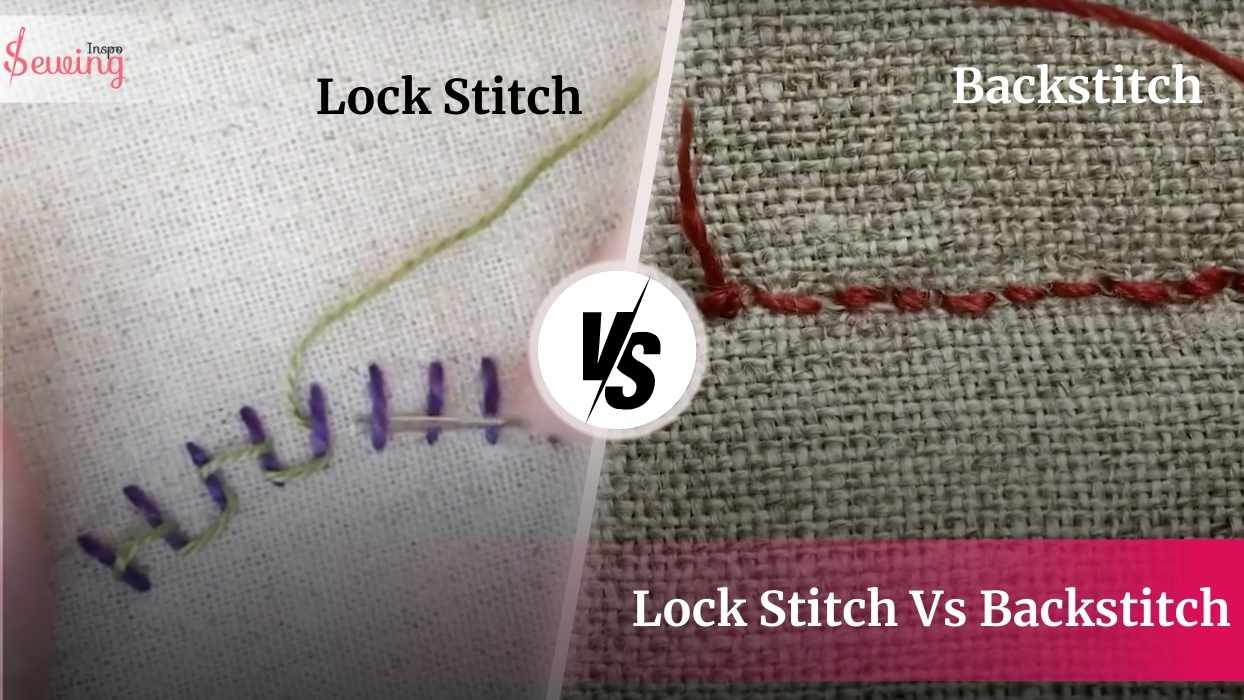
Table of Contents
What Is A Lock Stitch By Hand?
A lock stitch by hand is a secure, knot-like stitch that involves passing the needle through lightweight fabric layers and looping the thread back through the previous stitch to “lock” it in place.
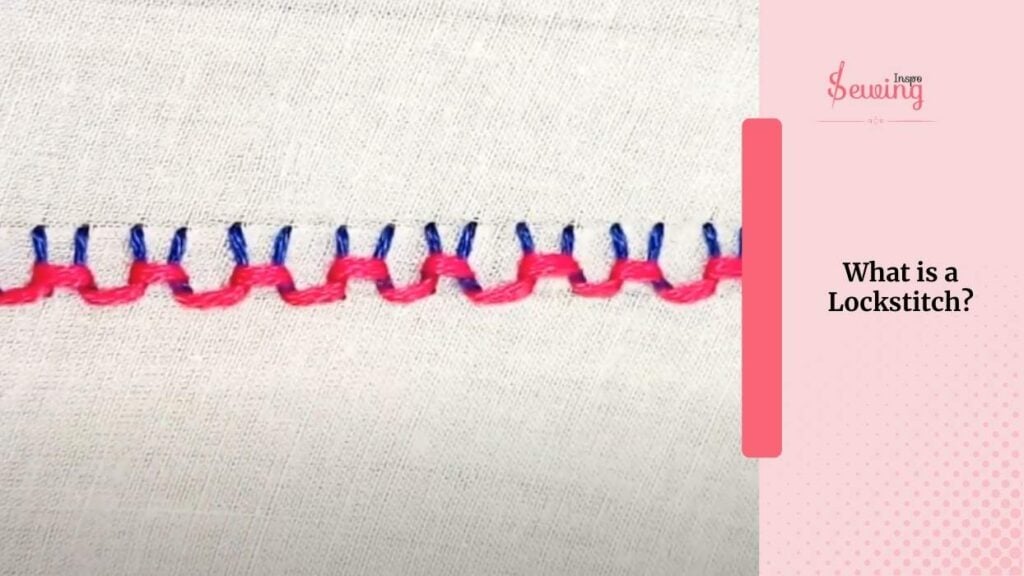
This is the most interesting stitch among types of stitches. rather than embroidery straight stitch.
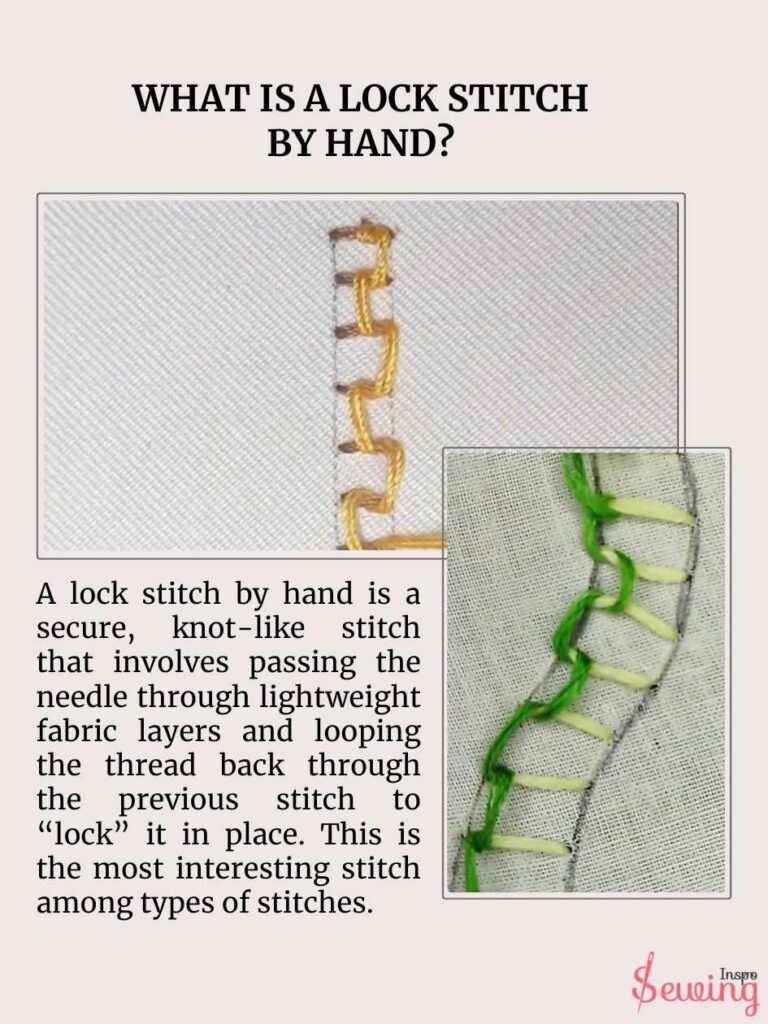
Lockstitch by hand, basically locks and holds the 2 fabrics together so they don’t lose. That’s why I find locking stitches so interesting.
The lockstitch uses 2 threads with twin needles: one on top and one on the bottom on a single stitch. It’s called a “lock” stitch because these 2 loose threads “lock” or intertwine right in the fabric where they meet. That’s what is a lock stitch.
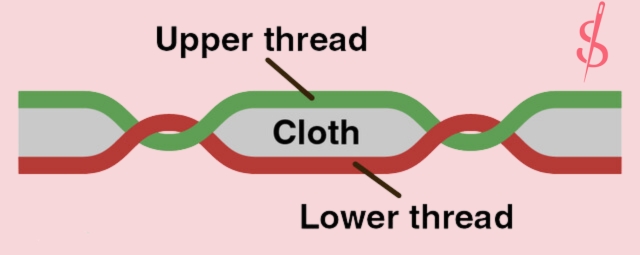
What Is A Lock Stitch Sewing Machine?
A sewing machine stitch where the bottom thread loops over the top thread, securing both tightly for a strong, even finish.

It’s the most common stitch used in sewing, found in everything from clothing to upholstery.

The main difference between sewing lock stitch & machine locking stitches are,
A lock stitch is a standard stitch that interlocks top and bottom threads, while machine locking stitches secure the thread at the start and end to prevent unravelling.
What Is A Lock Stitch Used For?
A lock stitch is used for creating strong, durable seams in a wide range of sewing projects.
It’s the go-to stitch for most machine-sewn items, from clothing and accessories to upholstery and home décor. So whenever I need to sew something easy yet fancy, I do a locking stitch.
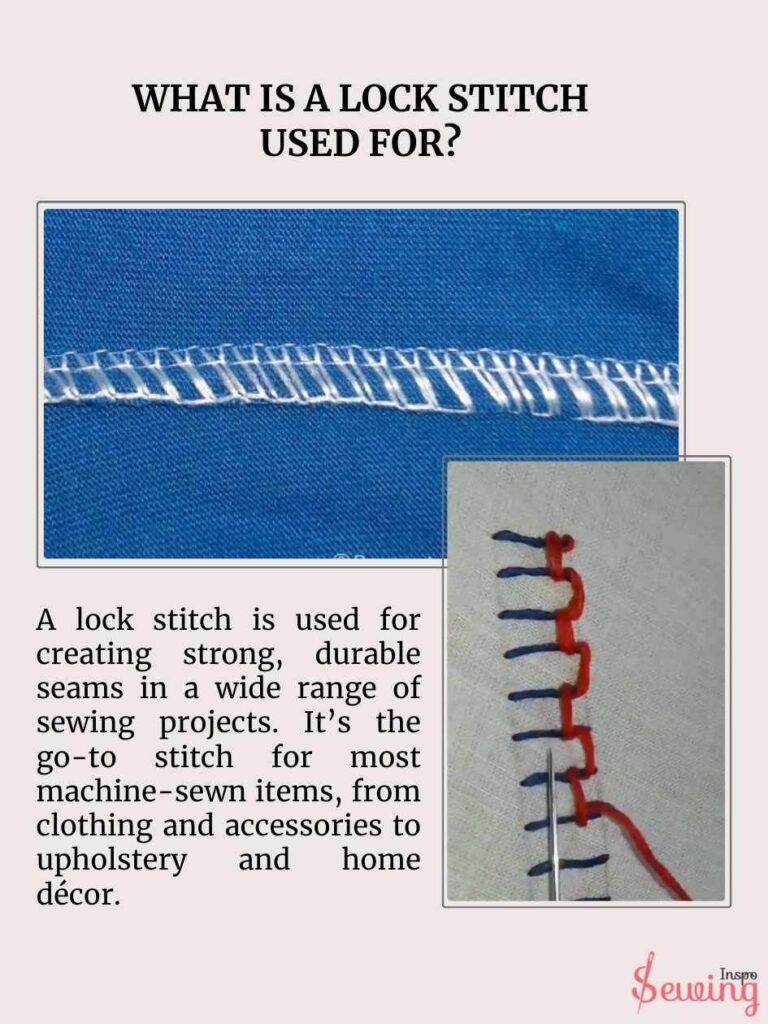
Lock Stitch Embroidery
I know just the definition won’t do so here saw some embroidery with lock stitch. You can do a lock stitch sewing machine too, but I’m comfortable doing it by hand. It turns out good too. Have a look,
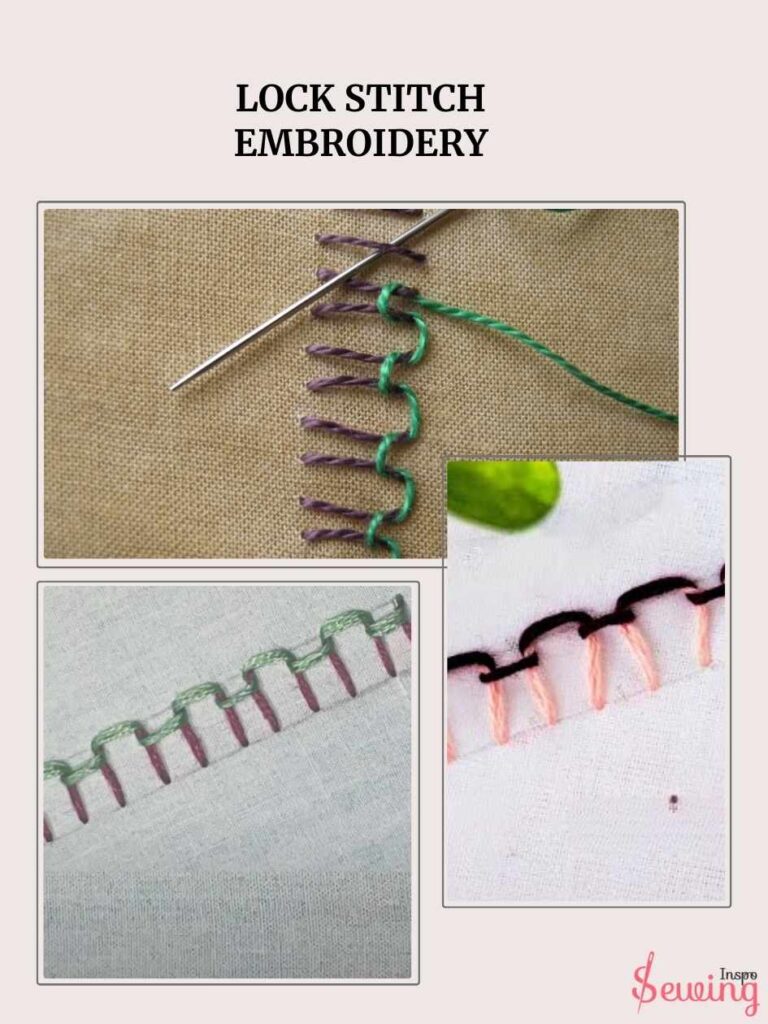
Lock Stitch Vs Backstitch: The Key Difference
The main difference between lock stitch vs backstitch is their sewing technique.
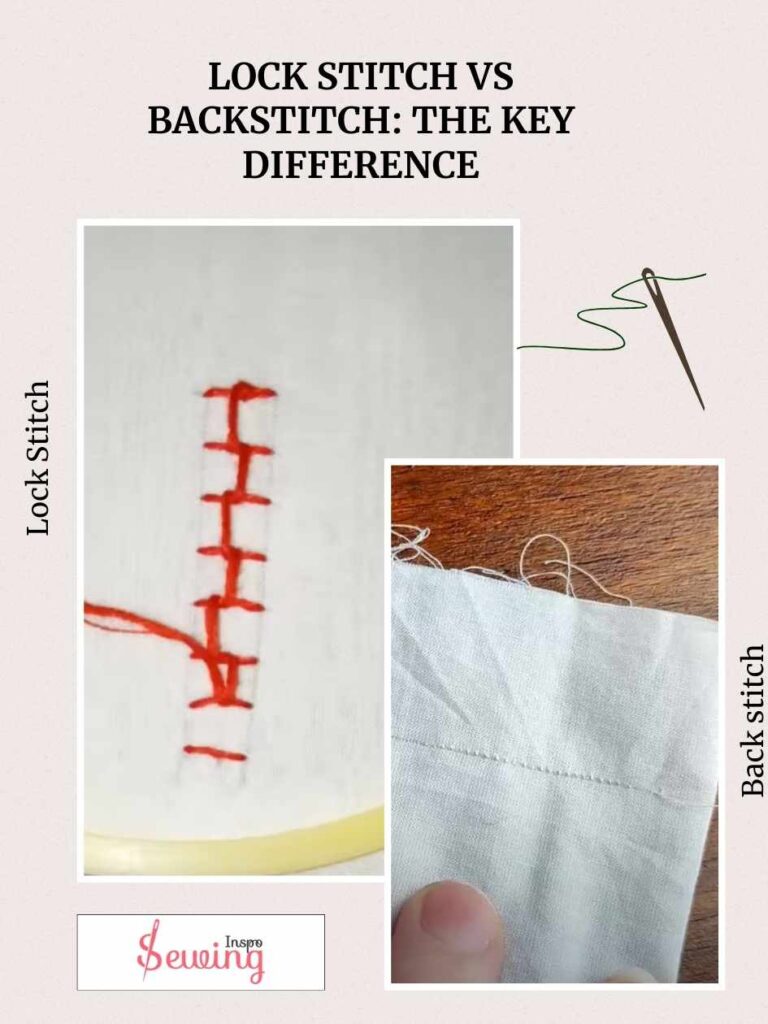
In lock stitch 2 thread locks the stitch but in backstitch, the thread goes continuously.
But that’s not the only difference between them.
There are more differences between them like there were between straight stitch and backstitch. For intense the difference between lock stitch vs backstitch:
| Feature | Lock Stitch by Hand | Backstitch |
| Technique | Thread is looped back to “lock” each stitch, kinda like front stitch sewing. | Each stitch overlaps slightly backward into the previous one. That’s why backstitch by hand is the strongest stitch. |
| Appearance | Lockstitch by hand is a Small knot-like points in a line | Continuous, solid line with no gaps |
| Strength | Locking stitches are Strong, secure for starting and ending seams | Very strong, ideal for entire seam lines |
| Usage | Securing specific points, reinforcing ends | Creating durable, reinforced seams |
| Ease of Use | Slower, more suited for specific points | Faster for long seam lines |
| Durability | Resists unraveling in high-stress areas | Provides lasting strength for high-wear seams |
That’s just a glance at the difference between lock stitch and backstitch. Now let’s take a closer look-
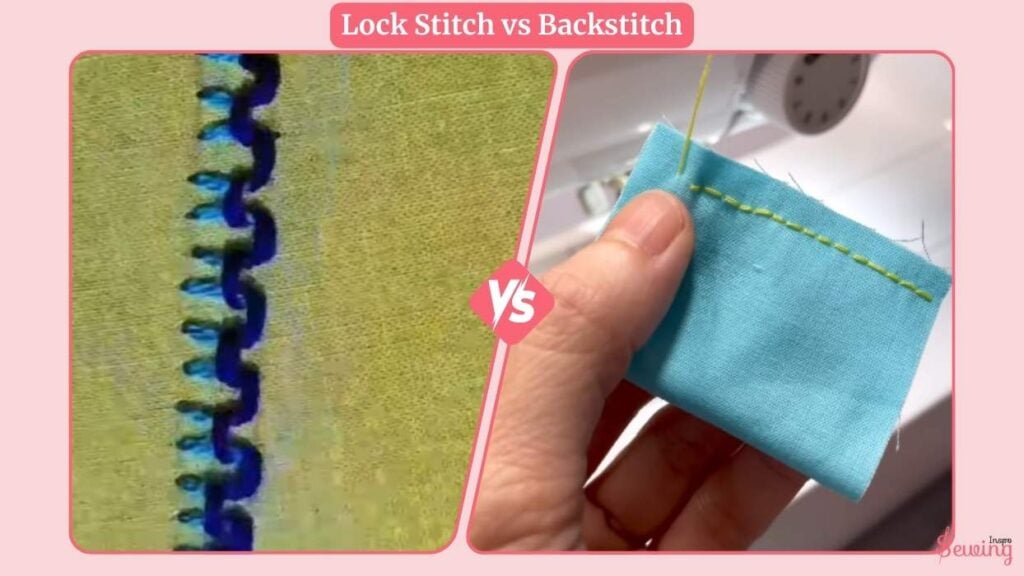
Technique Between Lock Stitch And Bckstitch
The main technique difference between a lock stitch and a backstitch is in how each one secures the fabric. Such as:
lock stitch you need to push the needle through the layers of fabric and loop the thread back into the previous stitch to “lock” it in a place like a double stitch. This is kinda like reverse stitching. Each stitch is knotted individually, creating a secure hold.
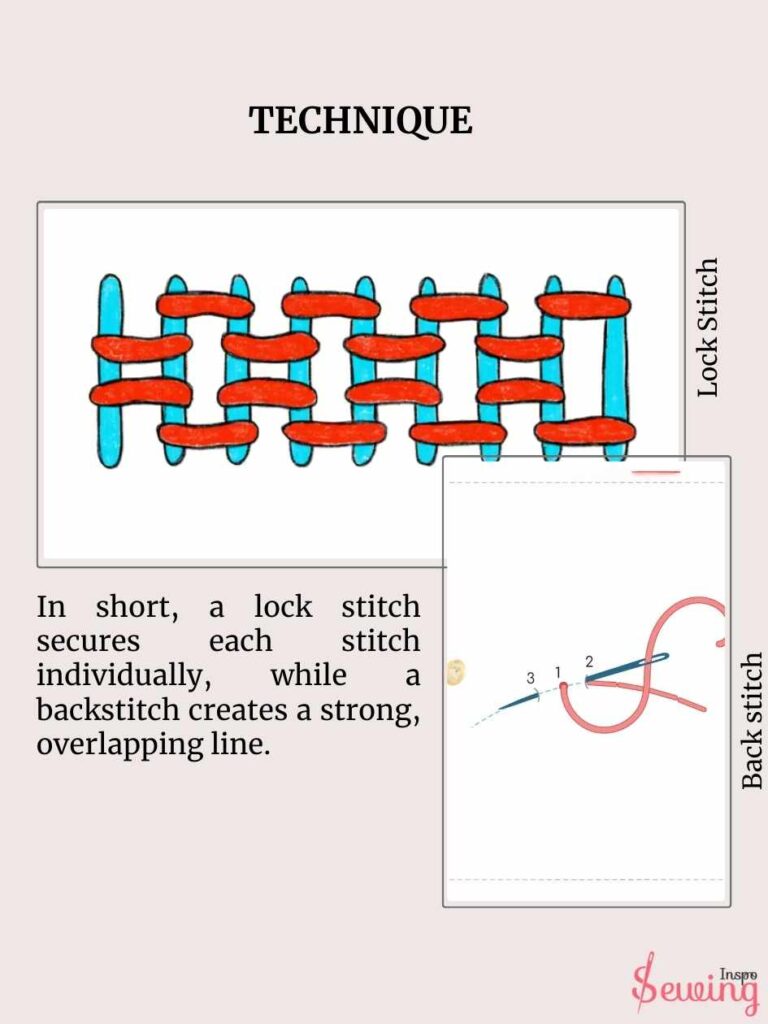
With backstitch, You push the needle backward into the previous stitch hole, overlapping stitches to create a strong, continuous line.
In short, a lock stitch secures each stitch individually, while a backstitch creates a strong, overlapping line.
Appearance Between Lock Stitch & Bckstitch
A lock stitch is tiny, neat, and sits. The stitches are close together, creating small, almost invisible unsightly thread knot on the fabric’s surface. This mostly use as a decorative stitch.
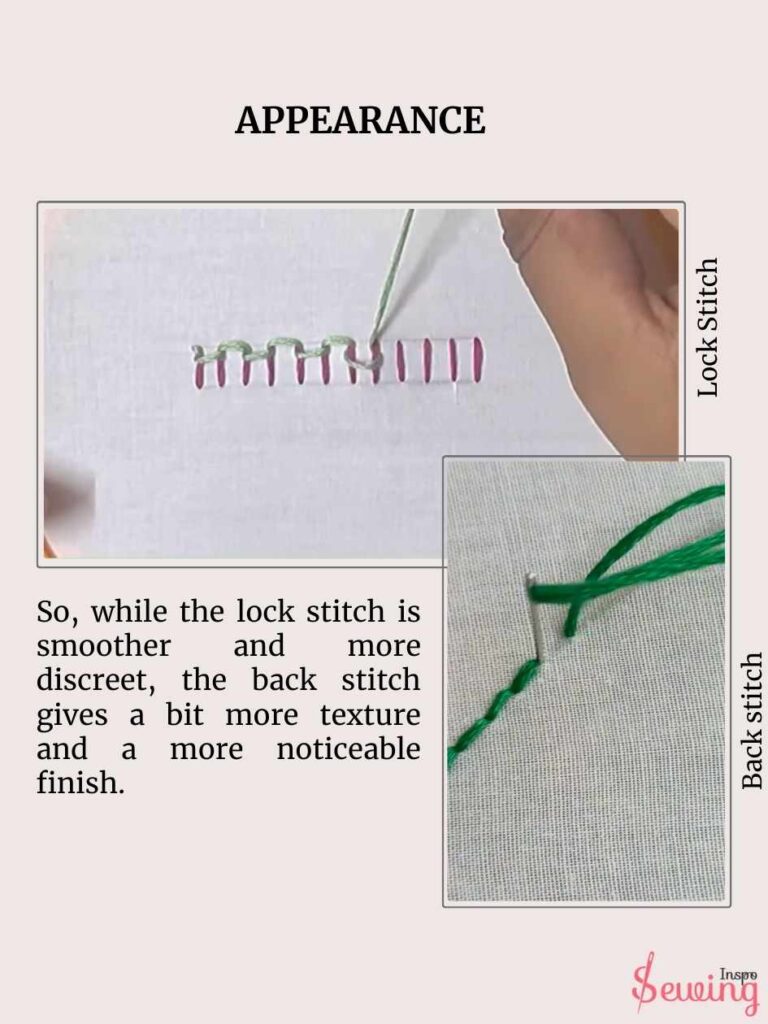
On the other hand,
A backstitch looks more like a continuous line, with slightly longer stitches that overlap each other. Each stitch is more visible, creating a series of small, regular dots or short lines along the seam. If you see back stitch image then you would know what I’m talking about.
So, while the lock stitch is smoother and more discreet, the back stitch gives a bit more texture and a more noticeable finish.
Strength In Lock Stitch & Bckstitch
Now if you are worried about the strength then the lock stitch, due to its knotting action, creates a more secure bond between fabric layers.
But of course, the backstitch is also strong. But it’s not as tightly secured as a lock stitch because it overlaps previous stitches rather than locking the threads together.
So, basically,

Both stitches are great for hand-sewing, but if you’re looking for something that holds up well under stress, the lock stitch might be your best bet. This type of stitch can secure the stitch nicely.
Lock Stitch & Bckstitch Usage
lock stitch is typically used to secure seams or finish off the beginning and end of a seam, creating a strong. You can often see them collar, cuff, pocket, sleeve, facing, etc.

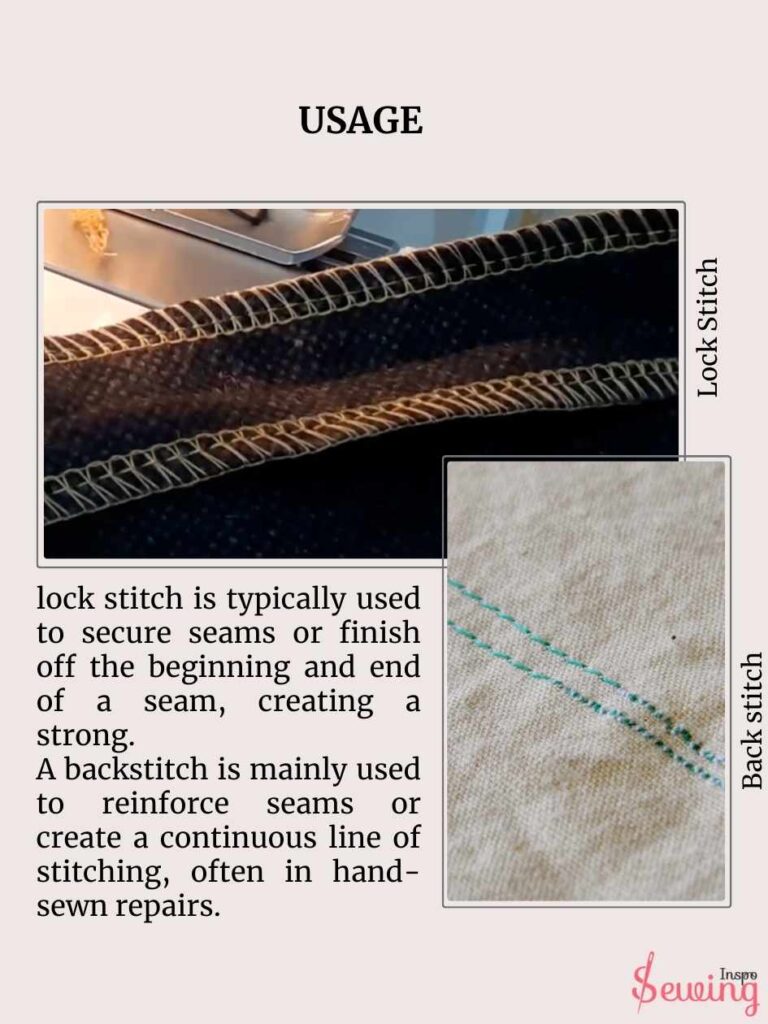
A backstitch is mainly used to reinforce seams or create a continuous line of stitching, often in hand-sewn repairs. It is a more durable seam. Backstitching is also ideal for hand-sewing details like hems or attaching pieces.
So basically, both of the stitches are used in different scenarios just like backstitch vs straight stitch.
Ease Of Use
When it comes to ease of use, the lock stitch can be a bit tricky because it involves creating small, precise knots to secure the threads. It’s not the quickest stitch.
On the other hand, the backstitch is generally easier and quicker to do by hand. That’s why it is a favorite for reinforcing seams or stitching things like hems. The backstitch creates a solid seam with a smooth finish and is more forgiving for beginners.
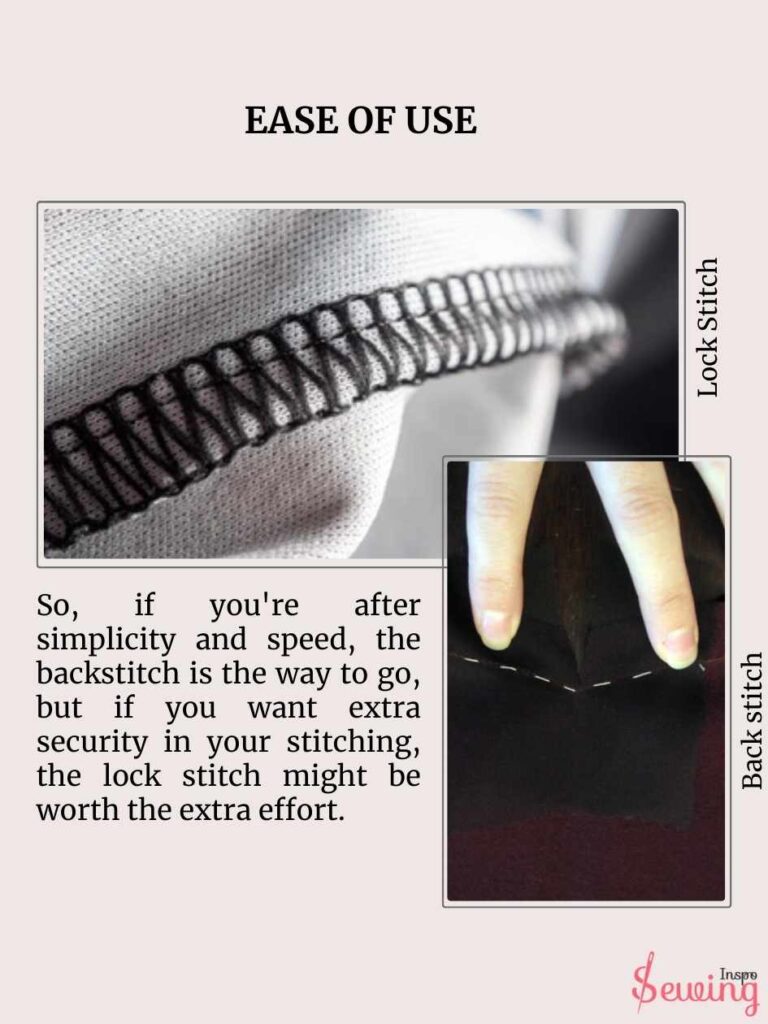
So, if you’re after simplicity and speed, the backstitch is the way to go. But if you want extra security in your stitching, the lock stitch might be worth the extra effort.
Durability
A lock stitch and a backstitch each have their strengths, but they’re used a bit differently. The lock stitch, usually done at the start or end of stitching to hold things in place, not as a full seam stitch.
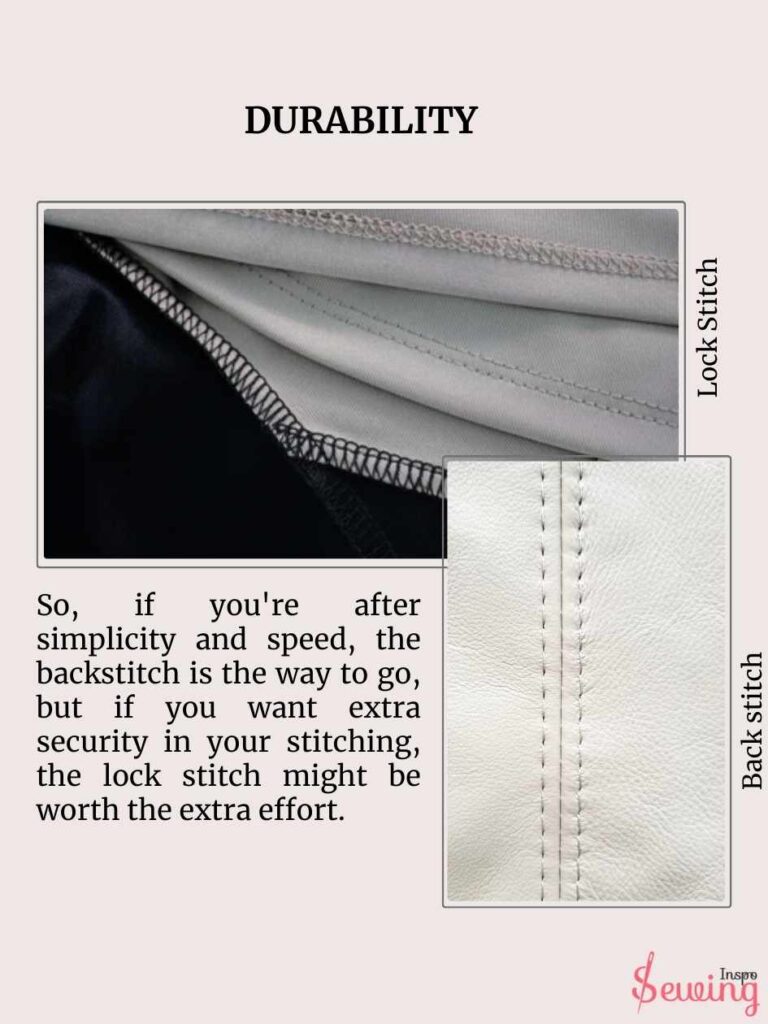
A backstitch, continuous and straight line with overlapping another thread. This overlapping effect gives the backstitch extra hold.
So, if you’re looking for the most durable option for a full seam, the backstitch has the edge, while the lock stitch is best for locking ends and securing specific spots.
Lock Stitch Vs Backstitch Which Is Durable?
The lock stitch is generally more durable as it tightly intertwines 2 threads (top and bottom), creating a strong bond that resists unraveling.
However, the backstitch is also durable as each stitch overlaps with the previous one.
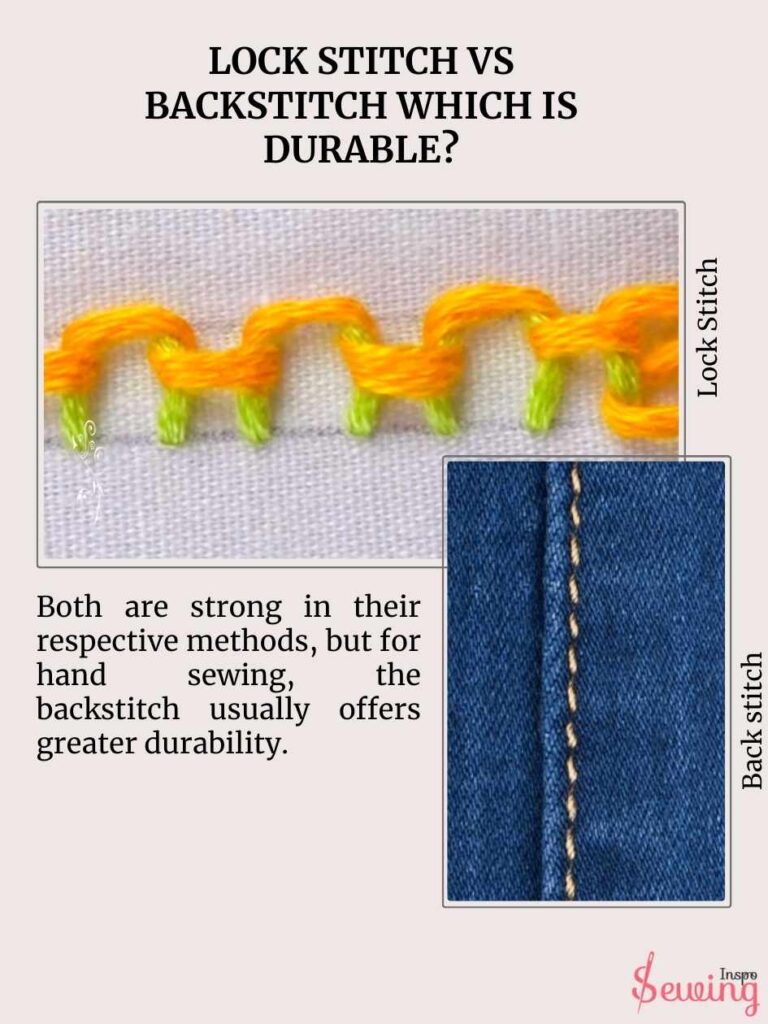
Both are strong in their respective methods, but for hand sewing, the backstitch usually offers greater durability.
If you like to read more difference about stitch then read the back stitch vs mattress stitch article or the chain stitch vs back stitch article.
Frequently Asked Questions
Can I Stitch Backwards To Lock Stitches In Place?
Yes, stitching backward is a common way to lock stitches in place! When using a sewing machine, simply reverse stitch over the last few stitches to secure the seam, creating a small overlap that helps prevent unraveling.
Can A Lock Stitch Be Done By Hand?
Not exactly. While there is a “locking” technique for hand-stitching, a true lock stitch requires a sewing machine, as it uses an upper and lower thread to form the stitch. Hand-sewn lock stitches usually imitate the effect by knotting or looping thread in place.
Which Stitch Is Better For Beginners, Lock Stitch Or Backstitch?
For machine-sewing beginners, the lock stitch is straightforward and commonly used. For hand-sewing beginners, the backstitch is easy to learn and gives a strong seam, making it great for small projects or repairs.
When Should I Use A Backstitch Over A Lock Stitch?
Use a backstitch for hand-sewn projects or repairs, especially if you don’t have a sewing machine handy. It’s also great for small, detailed work or reinforcing seams by hand.
Sum up
That’s the difference between lock stitch vs backstitch I have seen so far. I think that’s enough to tell them apart. What do you think? Now can you recognize them differently or not?
Let us know your thoughts on sewing inspiration.



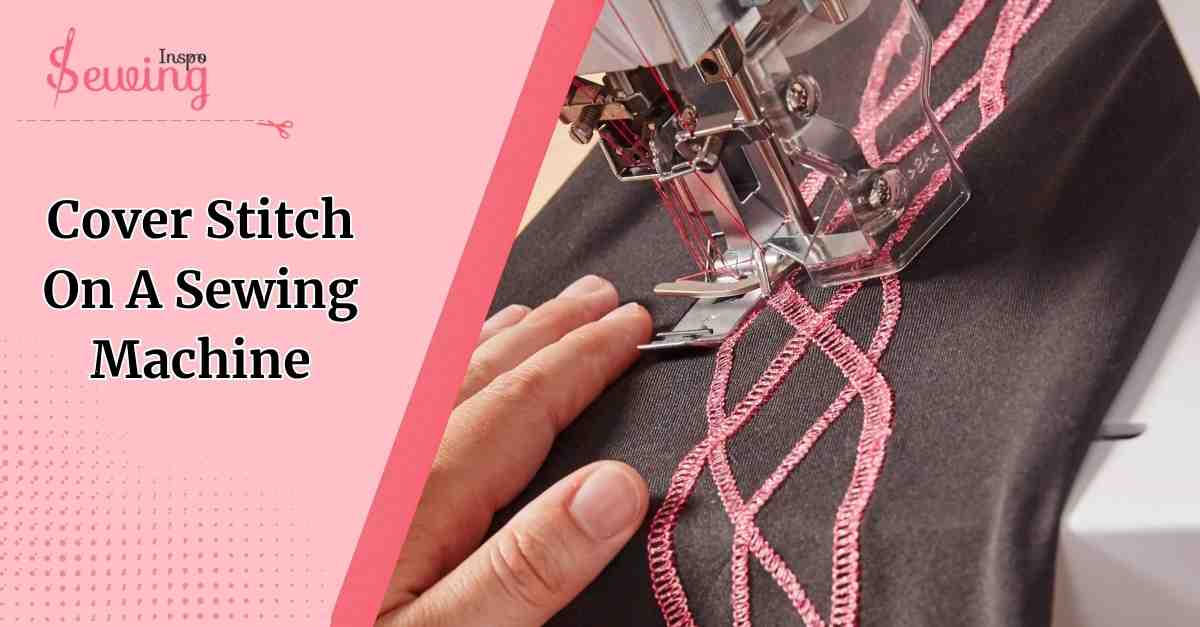
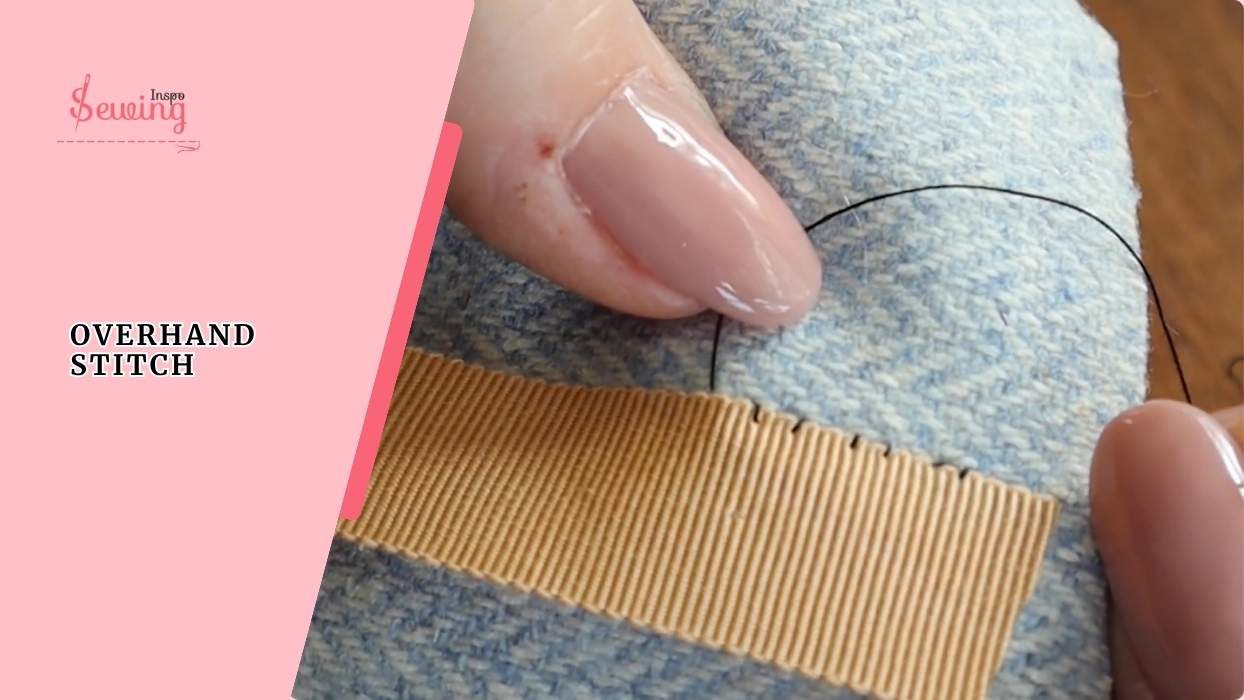
Leave a Reply